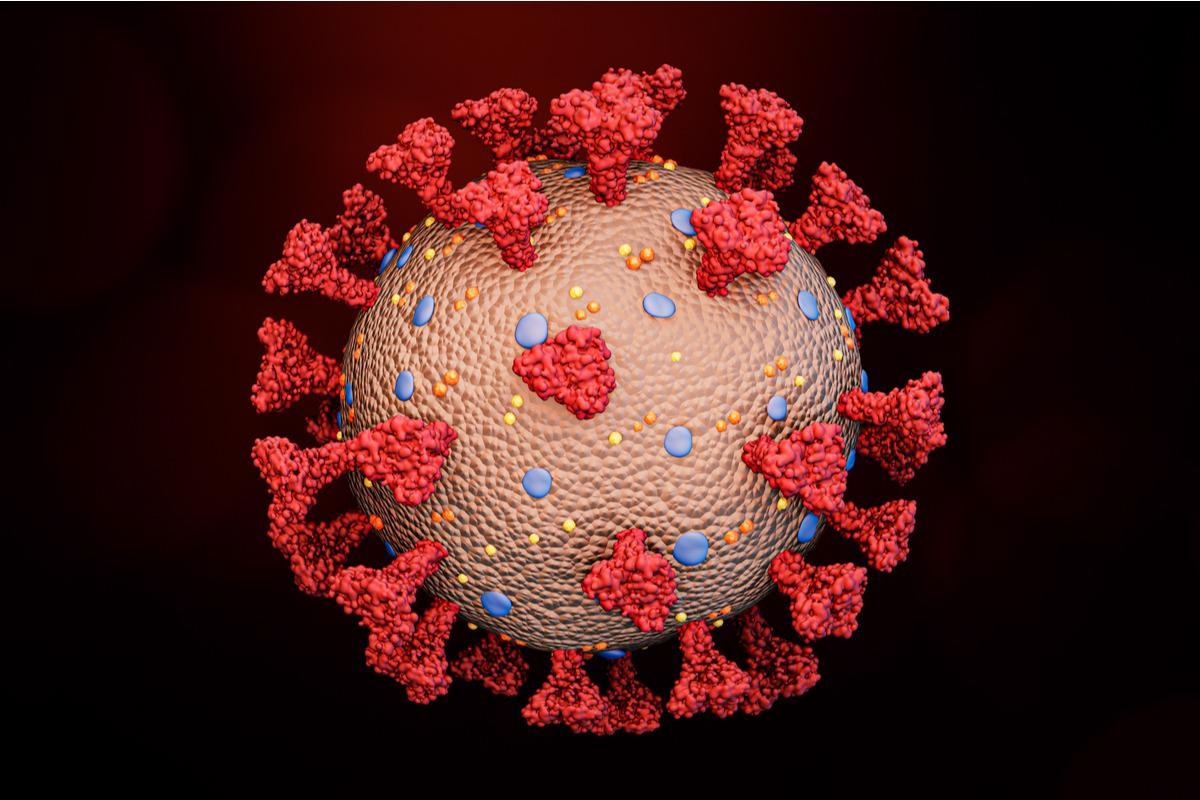In a recent study posted to the bioRxiv* pre-print server, researchers investigated the effects of severe acute respiratory syndrome coronavirus 2 (SARS-CoV-2) spike (S) mutations on antiviral restriction mediated by interferon-induced transmembrane (IFITMs) proteins and guanylate binding proteins (GBPs).
The interferon-stimulated genes (ISGs), components of innate immunity, encode antiviral restriction factors that act directly as the first line of defense against viruses, including SARS-CoV-2. The GBP2/5 sense an interferon-response activated due to SARS-CoV-2 attack in human airway epithelial cells and collectively target key viral replication steps to induce an antiviral state; likewise, IFITMs proteins act broadly to block SARS-CoV-2 entry.
Intriguingly, mutations within the furin cleavage site (FCS) of S protein affect these antiviral restriction factors. Therefore, investigating the effect of GBP and IFITM-mediated restriction is crucial to gain insights into how dominant SARS-CoV- 2 variants of concern (VOCs) are evolving their FCS by acquiring mutations to enhance their infectivity and transmission potential.
About the study
In the present study, researchers investigated whether antiviral restriction factors, such as GBP1/5 and IFITMs, could inhibit S cleavage translating in lowered SARS-CoV-2 infectivity. They also tested whether S mutations have provided SARS-CoV-2 VOCs ability to escape this restriction; in other words, they evaluated the effect of S mutations on sensitivity to endosomal restriction factors, including IFITMs.
Study findings
The study analysis showed that interferon-inducible restriction factors GBP2 and GBP5 interfered with furin-mediated cleavage of the S proteins of Wuhan-Hu-1, Alpha, Delta, and Omicron, similar to furin inhibition by GBPs. Moreover, GBP exposure shifted the viral entry route towards the endosomal entry. On the other hand, IFITM1, but not IFITM 2 or 3 ( predominantly located within endosomes) inhibited infection by SARS-CoV-2 early-lineage Wuhan-Hu-1, as well as Alpha and Delta VOCs.
Further, they observed differential sensitivity of S proteins of VOCs to GBPs and IFITM restriction, as the restriction by GBP2/5 correlated with the differential requirement for furin-mediated S processing. Consequently, S of Middle Eastern respiratory syndrome coronavirus (MERS-CoV) was sensitive, but SARS-CoV-1 was resistant to inhibition by GBP.
Omicron emerged as a unique VOC in being sensitive to inhibition by GBP2/5 and IFITM1, 2, and 3 and evolving towards the transmembrane proteases 2 (TMPRSS2)-independent entry pathway. It exhibited less sensitivity to the TMPRSS2 inhibitor Camostat and more sensitivity to the cathepsin inhibitor E64d. Moreover, it was significantly less infectious than other SARS-CoV-2 isolates on TMPRSS2 expressing Caco2 cells.
In addition, Omicron contains the same P681H FCS-optimising mutation as Alpha; additionally, it has enhanced affinity for ACE2 just as Alpha and Delta. Thus, researchers speculated that Omicron would be GBPs resistant in pseudoviruses (PVs) assay, similar to the other VOCs. However, Omicron was sensitive to GBP2/5, behaving like Wuhan-Hu-1. Moreover, increasing Omicron S incorporation into PVs did not rescue them from GBP or IFITM restriction.
The study data revealed that the evolution of Alpha and Delta S also contributed to conferring resistance to GBP restriction, and this was not solely due to the acquisition of an enhanced FCS.
Discussion and conclusions
Taken together, the study data indicated that SARS-CoV-2 is evolving to balance efficient host cell entry with evasion of compartmentalized restriction factors. Hence, Omicron has remarkably adapted its S activity, has become less fusogenic and is sensitive to restriction by GBP2/5 and IFITM1/2/3, which interfere with viral fusion and cell entry.
Furthermore, compared to Wuhan-Hu-1, Omicron contains three unique mutations (Q954H, N969K, and L981F) within the heptad repeat domain 1 (HR1) of its S that mediates viral fusion. As these substitutions are absent in Alpha and Delta VOCs, they may also be significantly contributing to the differences between Omicron and other VOCs in the context of S fusion, sensitivity to restriction, and tropism.
Overall, the mutations in and around the receptor-binding domain (RBD), N-terminal domain (NTD), and S1/S2 cleavage boundary of Omicron S might be contributing to the distinctiveness of the Omicron phenotype.
According to the authors, similar processes have occurred during SARS-CoV-2 evolution in hosts and hence the need to escape from neutralizing antibodies became the dominant selective pressure on Omicron. This interplay between evasion of innate and adaptive immunity, and the consequences for transmission and tropism, will continue to influence future SARS-CoV-2 evolution. Therefore, linking this evolution to phenotype could be crucial for developing insights into understanding SARS-CoV-2 biology and pathogenesis.
*Important notice
bioRxiv publishes preliminary scientific reports that are not peer-reviewed and, therefore, should not be regarded as conclusive, guide clinical practice/health-related behavior, or treated as established information.
